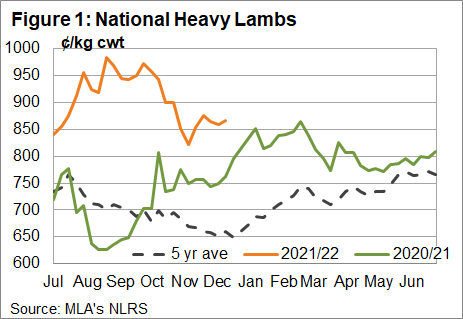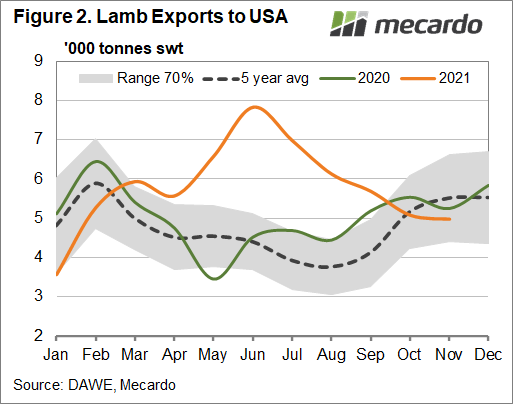As the end of the year draws near, there are plenty of positive signs for Australia’s flourishing sheep flock in 2022. The latest Meat and Livestock Australia and Australian Wool Innovation Wool and Sheepmeat Survey, conducted in October with results released earlier this month, shows 34% of producers intend to increase their numbers in the next year, and only 9% intend to decrease their sheep flock. For the second consecutive quarter, Merinos made up less than 75% of the total breeding flock of 41.8 million ewes, as lamb prices and plenty of feed propelled the sheep meat market.
This year has indeed provided plenty of potential for producers to put more sheep in their program, with 3% more breeding ewes reported year-on-year. The October Survey’s 91% producer intent to maintain or increase is pretty much on par with the figure from the same quarter last year, showing the past 12 months have done nothing to dampen confidence. More than half of those intending to increase flock numbers in the latest Survey will do so through replacement retention, while 30% will purchase more from outside their flock. Merinos made up 72% of the breeding ewes on hand, the second consecutive quarter this figure was below 75%, and down 3% on the same quarter last year.
As of October 31, the Survey found 29.4 million lambs on hand, with 51% of these Merino, 21% pure meat and 17% first-cross. Of these, 21.9 million lambs were marked from July to October, and 55% of these were Merino, with National Merino marking rates 93%, compared to 117% for all non-Merino breeds. While lamb numbers marked for the same period in 2020 were exactly the same, the number of ewes joined to produce them was down significantly this year, meaning marking rates were up 1% for Merinos and 8% for non-Merinos.
Consistent and historically high lamb prices are helping drive both the overall growth in the sheep sector, and the slight shift towards more meat focused production. The National Heavy Lamb Indicator reached a new high of 951¢/kg in August, rising 33% in just 12 months. As of mid-December, the NHLI was averaging a record 856¢/kg for the year, an 8% jump on the 790¢/kg record set in 2020. Also lifting 8% was the National Restocker Lamb Indicator, averaging a record 916¢/kg after hitting a new high of 1034¢/kg this year, while the National Trade Lamb Indicator average for the calendar year has lifted 5.5%, to 853¢/kg.
What does it mean?
ABARES is forecasting the value of sheep and lamb slaughter in 2021-21 to increase 16% to $4.9 billion, with both total sheepmeat production, and the average saleyard prices for lamb expected to rise 8%. While total Australian sheepmeat exports for the calendar year-to-November are on par with 2020, volumes to the two largest markets, China and the US, are up 3% and 20% respectively.
While global freight and other Covid-19 influenced hurdles will continue into the new year, La Niña is already delivering the goods (rain) for livestock producers domestically, and increased production should only further boost export demand as international markets further recover. Overall, fortunes are likely to continue favouring those with flourishing flocks in 2022.
Have any questions or comments?
Key Points
- Australian sheep flock growth is set to continue in 2022, with more than 90% of producers intending to maintain or increase their ewe numbers.
- Merinos drop to 72% of all breeding ewes as historically strong lamb prices drive growth of meat sheep production.
- Record average national prices and consistent export demand will equate to increased sheep lamb and mutton production in 2022.
Click on figure to expand
Click on figure to expand
Data sources: MLA, AWI, Mecardo.













